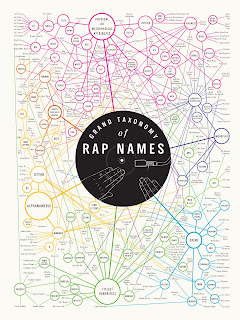The space in each poster was arranged at angles to create dynamic diagonals that made the posters kinetic as opposed to static. For the poster on the left the movement was needed to continue the flow of the curves. These curves needed to move to carry a relaxing feel in the imagery. Furthermore, the poster spans the poster from corner to corner and creates a nice hourglass-like shape that keeps the whole composition balanced and and somewhat elegant to stress the smooth relaxing curves. The poster on the right uses this diagonal composition to create movement, but for a quite different reason. The poster is very busy and dense. It's gridded and structured, to appear very rigid and demanding almost. The composition is layered over the top of the photograph of a map of Westport to increase the density of the poster.
The conceptual juxtaposition to my series is the dualism of business and leisure in society and urban areas through the visual elements of Westport. Westport was used because it is a place of leisure (for patrons and the common public) and a place of business (for business owners and employees). Also, Westport sits askew to the rest of the gridded Kansas City roads. This, in a way sets the leisure aspect of Westport aside from the busy bustling business of Kansas City.
The relaxed aspect of the left poster represents the relaxed leisure of Westport while the right poster represents the rigid and structured business aspect of Westport. The right poster also sets a grid that is interrupted by the large black area with the text. This formal concept stresses the idea that Westport is set apart from the Kansas City road system. It's a place to escape to and relax.
The poster on the left started as just the bench and line study as it is now in the corner with nothing else. It was rather empty and the bench lost is contextualization as a bench. So, I set out to fill some of the white space and contextualize the image as a bench. These two goals went hand in hand and solving one certainly meant solving the other. Another image of the bench was added to contextualize the bench. When this image was added it just sat in the corner where it sits now with nothing between it and the main part of the composition. Next I needed to find a way to integrate the two into each. Eventually I was able to decide on a transition into the upper bench's shadows using fragments from the main image. This created an hourglass shape that was visually pleasing.
The poster on the right was ran through a few cropping iterations to see which made the image of the map easier to see. Once a close cropping was chosen for the composition something had to be done about the photo. The map that I took the picture of was pixelated. Badly. The close cropping helped this issue by no means. To solve the pixelation I live traced different tolerances and shades of gray of the map. These were then layered to create a pixelated like gradient. Then a halftone bitmap was added on top to help the pixelation.
































